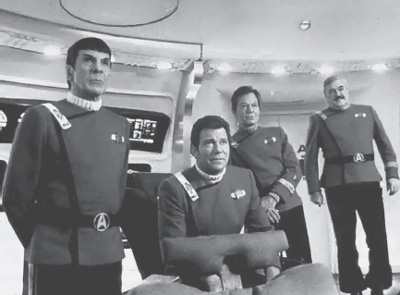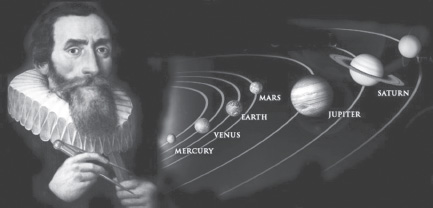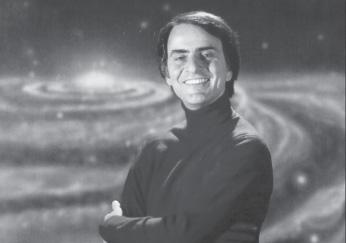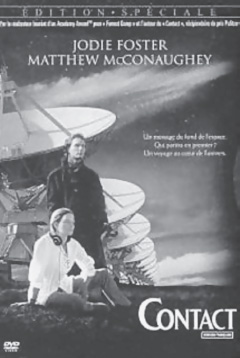Secret Journey to Planet Serpo (16 page)

A STRUCTURED CIVILIZATION
Anonymous answered some of the questions that were sent in to the website after it was launched in November 2005. The following information was given in answer to a question about the Eben population.
Why does the Eben population number only about 650,000? The Ebens have a very stable, structured civilization. Each male has a mate. They are allowed to reproduce (in somewhat the same sexual way we do), but are limited to only a specific number of children. Our team never saw a family with more than two children. The Eben civilization was so structured that they planned the birth of each and every child, spacing them apart to allow the proper social grouping of the civilization. Eben children matured at a super rate, compared to Earth children. Our team watched live births, attended to by an Eben doctor, and then watched the development of the child over a period of time. . . . They matured at an alarming rate.
The Ebens had scientists, doctors, and technicians. There was one educational facility on the planet. If one was chosen, you attended the facility and learned the job one was best qualified and suited for. Although it was extremely difficult to judge or measure, the team estimated each Eben's IQ to be 165.
This information further substantiates the conclusion that the Council of Governors exercised complete authority and control over every aspect of Eben life. There appeared to be no appeal from their decisions. It was absolutely dictatorial. And yet, the team estimated that the most of the Ebens were extremely intelligent. The novel concept of individual liberty had not yet come to Serpo. They were all expected to work, and the fruits of their labor accrued primarily to the ruling class. Deprived of any leisure, they were not able to produce artistic or creative works to entertain or enlighten each other. The world they inhabited was grim and gray. And yet, we can dimly perceive the seeds of rebellion in Ebe5, the “Eben Einstein,” who followed the team around. Apparently, he began to appreciate the concept of liberty in the actions of the team members and wanted to know more about their principles of freedom.
A “1984” SOCIETY
This excerpt from a later diary entry by the Commander reinforces the view that Eben society was strictly controlled:
At one of our team meetings recently, 203 and myself decided to give up the military greetings, saluting that each member gave the first time they saw us. I decided we maintain our military bearing
and manners but we will give up the saluting. Each team member agreed. I have no problem with that. The Ebens just starred [
sic
] at us when we did that.
But they also have their greetings. Ebens exchange greetings depending on the time of day. They hug on certain times, touch fingers on other times and bow at other times. We still haven't figure [
sic
] out why they do that. Ebe2 just explained it was a formal greeting method.
Ebens live a very strict life. They keep a regimented lifestyle. We have seen some variances, but only by a few. The military keeps everyone in line. The military acts as a police force, as I mentioned before. They do not carry any weapons but they do have different uniforms and every Eben respects that uniform. The military are patrolling all the time. They walk in pairs and seem to be extremely friendly, but can be very strict. We saw two Ebens walking across a field. Two military members quickly approached the two Ebens and pointed to a building. The two Ebens walked to that building with the military members. The military members were yelling something at them. At the time, neither 420 or 475 were available for translation but I figured those two Ebens violated some custom or law. We have been warned by the military when we approach something we are not suppose [
sic
] to approach. The military are very respectful when they deal with us but they don't allow us to violate any of their customs or laws without warning us. When we first killed one of the sand snakes, we had six military members at the scene in no time. It took a great deal of diplomacy to deal with that situation. But the military never touched us nor threatened us.
The Ebens have adjusted to us, just as we have adjusted to them. We carry on our mission and they allow us to do just about anything. The one forbidden act is not to enter a private living house. We did that once and was politely escorted out by the military. There seems to be more military than are actually needed. They do have weapons, as I mentioned before. We rarely see any military member with those weapons. But we have seen
them during the alert that occurred some time ago. Ebe2 came into our living compound, just after one of our rest periods. Ebe2 was excited and told us to stay inside and not to exit our living quarters. We asked why and Ebe2 said that an unknown spacecraft had entered their planet's orbit. But Ebe2 assured us that the military would take care of the problem. We naturally went into our own alert. We issued our weapons and stood by to guard our living area. We violated her instructions and went outside. We watched the skies and saw a lot of air traffic. We then saw all the military members with weapons and something that looked like field packs. They were in full fighting gear, as 899 called it. The alert didn't last very long and Ebe2 came back, looked at us a little curious and then told us everything was alright and the alert was over. We asked her if the unknown spacecraft was identified. She said it wasn't a spacecraft, but just a natural piece of space debris and left it at that. We didn't believe her, but we had no way of knowing any difference. We returned to our normal routines.
With this new information from the Team Commander, we are now justified in referring to Serpo society as a “police state.” When he says, “The military keeps everyone in line . . . The military are patrolling all the time,” we can reasonably conclude that the police state designation is appropriate. It's unfortunate that we are not told how the ruling class lives, but we can presume that their lifestyle is far more commodious, perhaps even luxurious. Since the doctor in the biomedical building spoke perfect English, and he was clearly a member of the upper class, we now know that they are very well educated, especially about Earth matters. But, from what we have learned so far, our team was not permitted to meet them.
Evidently, tyranny and enslavement exist in many worlds in our Milky Way. We can see clearly that this would have been our fate too if the fascists had won World War II. Now, as we begin to venture out into the cosmos, we must take it upon ourselves to embark on a mission to bring the blessings of liberty to the oppressed peoples throughout our galaxy. It's the right thing to do. Thomas Jefferson would have encouraged us to become the liberators of galactic societies subjugated by tyrants. Perhaps if, in the near future, William Shatner were elected president of the United States, we might be able to join our space brothers in the Galactic Federation in their quest to restore, protect, and advance freedom throughout the galaxy. Certainly, we would be a highly valued asset with Captain Kirk at the helm.

The
Star Trek
team helping to liberate the galaxy from oppression
14
FEAST, FUN, AND DEATH
In answer to a question submitted to the website, Anonymous says:
As to the Eben culture: They had a form of musical entertainment. The music sounded like tonal rhythms. They also listened to a type of chanting. The Ebens were dancers. They celebrated certain work periods with a ritual dance. The Ebens would form a circle and dance around, listening to the chanting type of music. The music was played on bells and drums, or something similar to them.
From the Commander, we learn more about how Ebens have fun:
We had a feast today. What a feast. We used our last C-Rations but the Ebens didn't really care for our food. We did kill a beast. As I mentioned before, the Ebens allowed us to kill the beasts for meat. The meat isn't really bad, 899 says it tastes like Bear, which I never ate. But Ebens look at us very strange [
sic
] when we eat meat. Strange, they can clone creatures and other species of humans, but they can't eat meat. How strange they are. But they allow us to do just about anything we want, and eating meat is something we need for the protein. We used the last of our salt and pepper, which does make eating their food more of a challenge. The Ebens don't have anything similar to salt and pepper. They do have an herb, as we call it, something like Oregano which they use. It has a tart taste but we have developed a taste for
it. The feast was great. We participated in the dances, which the Ebens really like. They get great pleasure dancing and playing their strange games. I described the games before, but [at] this feast, we saw something different. The game was played like chess, but with Ebens standing on a large square area of the compound. The squares were divided into twenty-four sets. Each set had another two spots. Just how or why the Ebens moved was a mystery to us. One of the Ebens would say a word and then another Eben would move. It appeared that it was a team game. Six Ebens on each side. We couldn't figure it out but at the end, the Ebens danced with each other, signifying a victory, we think. It was a fun day.
BALL GAMES AND SEX
And more from Anonymous:
Our team brought along softball equipment for sporting activity. The Ebens would watch the game and laugh out loud. (The Eben laugh sounded like a high-pitched yell.) Eventually, the Ebens started playing the game, but never got used to catching the ball before it hit the ground. Our Team also played touch football. Again, the Ebens watched the game intensely and then played it themselves. But again, like softball, the Ebens never figured out they had to catch the football before it hit the ground!
Although our Team Members honored the privacy of the Ebens, our Team was allowed to witness births. Our team, snooping aroud [
sic
], was able to capture the sexual activity of the Ebens. The males and females had similar sexual organs and performed intercourse. The frequency of sexual activity was not recorded as being as often as in our society. It was believed that they performed the act for pleasure and reproduction.
The Team Commander continutes his narration about the feast day:
My team played softball with some hard nosed Ebens, who have learned the game. Well for the most part. They still haven't figured out they have to catch the ball before it hits the ground. But they had fun. We have found some extremely gifted athletics [athletes] among the Ebens. Then again, we found some who had no athletic ability. Just like humans. Our softball game ended when the rains came. We ended up inside the community building. We finished our meals and went to our living area. As we do each day, we have our end of day briefing. We check each other for psychological condition and medical health. Our day ends and we start our eight hours of rest.
WE HAVE GIVEN UP EARTH TIME
Ebens have a different period of time, as I mentioned before. They rest about four hours, for every ten hours' working time. But we must consider that their hour is longer and that their days are longer. So we stopped using our time and used the Eben time. It is difficult to understand, but this is only a diary. Once I return to Earth, I can explain the time difference and how we had to use their time instead of ours. I keep writing about the time in every diary entry, but it is important to note that even though we have been hear [
sic
] for about three years, Earth time, we have given up Earth time and utilized the Eben time. We tried to use their two suns as a counting system, but that didn't work. We then tried to use our own watches, but that didn't work. So we gave up our timepieces and just use the Ebens' time tower. Each village has one and it is easy to understand the symbols. Each symbols [
sic
] means a certain time and certain work period.
The time situation was complex because it related to the way Serpo revolves around Zeta Reticuli I, while influenced by Zeta Reticuli II. Here is what Anonymous says about the time problem:
Our scientists had the same questions, as posed by your audience. Our scientists questioned our team members and the information they gathered. Our scientists could not understand how the orbit of . . . Serpo could revolve around the two suns at the distance measured. In the end, our scientists found that some things relating to that particular system was different in physics compared to our system. There were some questions about how our team measured the orbit and other calculations based on the lack of a stable time base. For some reasonâand I don't think this was ever determinedâour time instruments did not work on Serpo.
Now, considering this, you can understand the difficult job our team members had making calculations without time. They had to come up with an alternate method to measure speeds, orbits, etc. Challenge: Try solving a problem in physics without being able to measure time on Earth! So you see, our team did the best they could with the instruments they had and the hardships they developed attempting [to make] scientific calculations. It is difficult for any Earth-based scientist to understand the different physics in other solar systems or on other planets. One of the questions sent me involved Kepler's Law of Planetary Motion. Our team had that information. We had some of the best military scientists on the team. But if you consider Kepler's Law, it requires time and our team could only measure time in the conventional way. It was determined that Kepler's Laws did not apply to that solar system. CONCLUSION: One of the things our Earth-based scientists learned was not to apply Earth's laws of physics in a universal way.
Anonymous says further on this subject:
Regarding Time: The Team Members brought several timepieces, e.g., wristwatches, nonbattery style, as it stated in the debriefing data. The time pieces worked, but they had no reference to time since the Eben days were longer, the dusk and dawn periods were longer and they had no calenders to reference. They did use the timepieces to calculate movement; for example, timing the movement of the Eben two suns. They also calculated the time between work and rest periods. But, after awhile, the team discarded their timepieces and used the Eben's measurement of time periods. The team became confused with the calenders [
sic
] they broughtâa ten-year calender [
sic
].

Johannes Kepler (1571â1630) (also see
plate 24
)
After 24 months, the team lost track of time, as to the calendar [
sic
] since they could not properly calculate days compared to Earth days. They set up one large clock to the earth time when they left. However, this was a battery-controlled clock and when the battery died, the clock stopped and they forgot to change the battery in time. Consequently, they lost the earth time. The team brought a large quantity of batteries, but they ran out after about five years. The Ebens had no comparable item like batteries.
Noted Cornell astronomer Carl Sagan was consulted about the planetary motion of Serpo that contributed to the timing difficulties. About this consultation, Anonymous says:
One of the principal home-based scientists (astronomer) contracted to assist us was Dr. Carl Edward Sagan. Initially, he was the biggest skeptic of the group. But as information was slowly analyzed, Dr. Sagan came back to the middle. I can't say he fully accepted every single piece of data, but he did agree on the final report.
E-mail moderator Victor Martinez supplied the following “FAST FACTS” about Carl Sagan's involvement in the program, on the website:
Born in Brooklyn, NY on 11-9-34 and died in Seattle, WA on 12-20-96 of bone marrow cancer. He was an American astronomer, educator, and planetary scientist and was the director of the Laboratory for Planetary Studies at Cornell University.
CONNECTING THE DOTS: Project Serpo's final report was written in 1980 with Dr. Sagan having been brought in halfway through the project. It is believed that he wrote his 1985 best seller, CONTACT, based on his insider knowledge of the most secret project in human history: a human-alien exchange program of which he signed off on its final report! Years later, his book was made into the 1997 movie CONTACT starring Jodie Foster.
Sagan became well known as a result of his public debate in 1969 with Dr. J. Allen Hynek, sponsored by the American Association for the Advancement of Science (AAAS), about whether or not UFO investigation should be considered serious science. Sagan argued that it was pseudo-science, and he was proclaimed the winner. He was brought in as a consultant on the Serpo project about a year later, when he then had to, of course, reconsider his skepticism. Sagan also locked horns on the same issue with well-known scientistâUFO investigator Stanton Friedman, his classmate in physics at the University of Chicago in the 1950s. But, even long after his involvement with the Serpo program in 1980, when he wrote a section of the final report, he was still able to say, in his bestseller
Cosmos,
published in 1985: “We maintain that there is no credible evidence for the earth being visited, now or ever.”

Carl Sagan, famous Cornell astronomer widely believed to be skeptical about UFOs
We now know posthumously that Sagan really wasn't two-faced about the extraterrestrial question. He had to be skeptical about UFOs in public so as not to jeopardize his position in the astronomy department at Cornell, where he could not afford to appear to be unprofessional. Cornell relied heavily on government funding for its astronomy research, especially from NASA, and this could have been terminated had his real beliefs been revealed. In reality, Sagan was a member of the Council on Foreign Relations, and it is believed that he may even have been a member of MJ-12! His true interest in extraterrestrials was revealed in his blockbuster book,
Contact,
later made into a hit movie in 1997, starring Jodie Foster and Matthew McConaughey. Sagan was a man of many talents. He won the Pulitzer Prize for nonfiction in 1978 for his book
The Dragons of Eden
. He has been immortalized in downtown Ithaca, New York, the home of Cornell, with the Sagan Memorial Walk of Planets. Ironically, in the end, it was he, more than anyone else, who raised the public consciousness all over the world about the possibility of life on the “billions and billions” of other worlds. But he did it his way. In terms of public perception, he had to walk a narrow path. But he navigated it successfully, and his continued fame is well deserved.

Contact
movie poster
The problem of Serpo's planetary motion as related to the measurement of time generated a flood of commentary to the website. See appendix 4 for a summation and encapsulation of this commentary, with a layman's attempt to comprehend and bring some order to the discussion.
